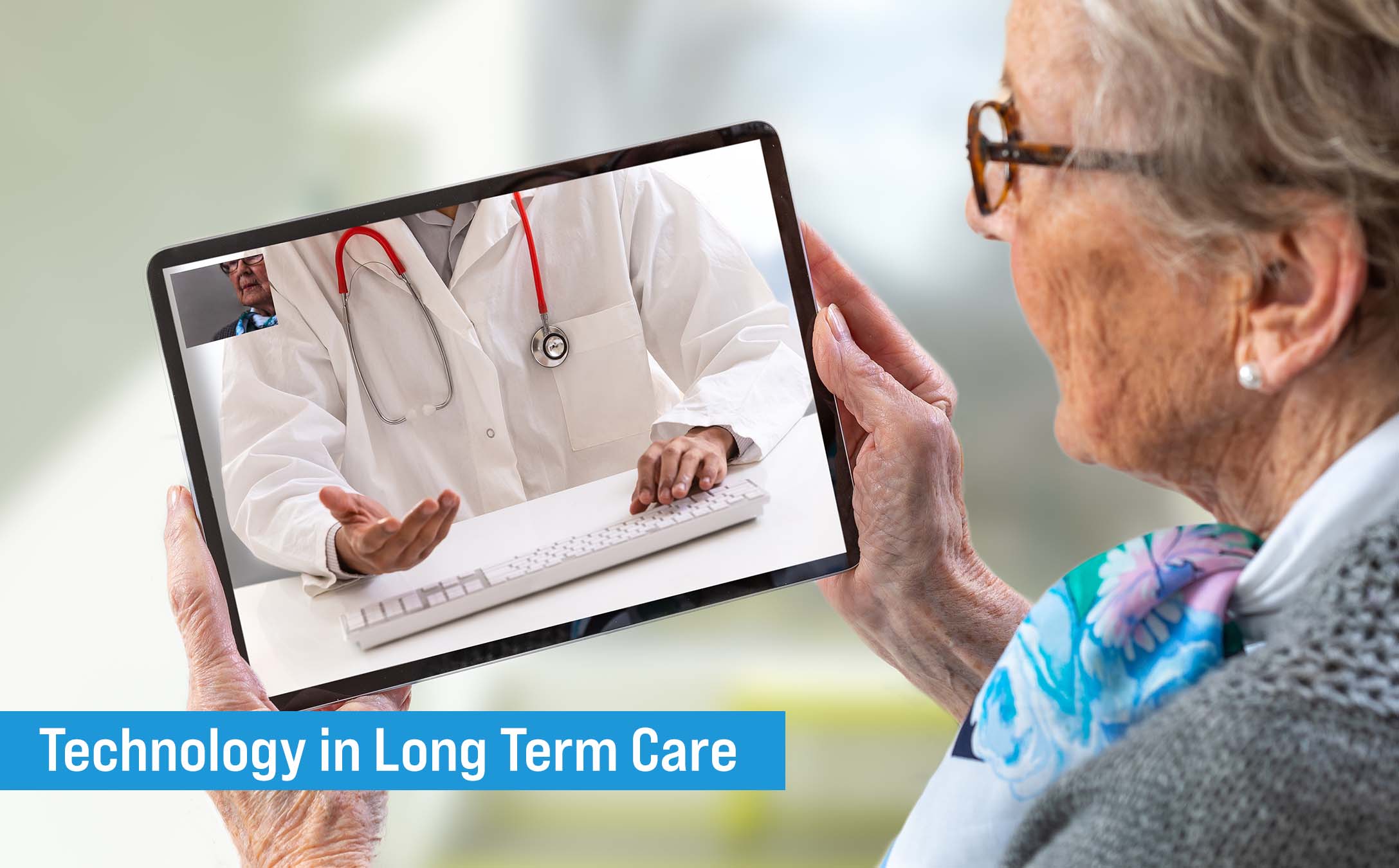
There’s no question that technology enhances our day-to-day lives. Many modern technologies are becoming especially useful tools in the long-term care industry, helping to reduce liabilities and staff turnover, and foster stronger patient-centered care.1 Modern advancements can help residents with mobility and social interactions, and many can also be used to facilitate virtual visits with care providers and help facility staff monitor the safety of residents.2
- Technologies available to long-term care facilities include:
- Wearables: technologies worn by residents to monitor overall health or placed within their immediate environment to detect falls.
- Alarms and Alert Systems: systems to detect resident falls or health changes that warrant immediate intervention.
- Electronic Records Sharing: digital sharing of medical records among all health providers.
- Telehealth and Telemedicine: videoconferencing, e-health, remote monitoring of health concerns, wireless applications.
- Wireless Data Communication: use of handheld devices as mobile, point-of-care systems; e-prescribing and electronic order entry systems.3
Virtual care technology is a key solution to addressing staffing shortages in the long-term care industry. Data suggests that by 2025, the industry will need to add approximately 1.2 million employees4—a staggering statistic for an industry still reeling from pandemic-fueled shortages. Unsurprisingly, many facilities today do not have enough providers on site or on call after hours, so residents are often routinely transported to hospitals, leading to unnecessarily costs and health care plan penalties.5 Virtual care technology can enable offsite providers to deliver care to residents in an expedient manner, thereby improving operational efficiencies and avoiding unnecessary hospitalizations and associated costs; early virtual intervention can help providers identify developing complications and determine appropriate courses of action.6
Fall detection technology can significantly decrease staff response times, leading to rapid intervention and improved recovery outcomes; likewise, automatic door locks, elevator access controls, and perimeter monitoring technology reduce incidents, advance overall safety and satisfaction, and also improve regulatory compliance.7
By 2030, nearly one in five Americans will be 65 in older, according to the National Institute of Health.8 Long-term care facilities will need to embrace emerging technologies to counter the many obstacles and challenges ahead.
Sources
1, 3. www.nursinghomes.com/the-impact-of-technology-on-long-term-care
2. www.mcmasteroptimalaging.org/blog/detail/blog/2021/08/11/harnessing-the-potential-of-technology-to-strengthen-the-long-term-care-sector-(part-1)
4-6. www.mcknights.com/marketplace/how-virtual-care-technology-can-transform-long-term-care-facilities
7. https://leadingage.org/safety-technology-long-term-and-post-acute-care-primer-and-provider-selection-guide#4
8. www.ncbi.nlm.nih.gov/pmc/articles/PMC3622259
